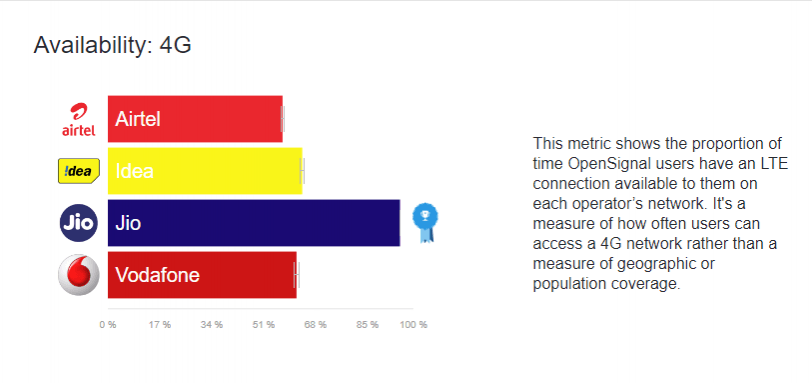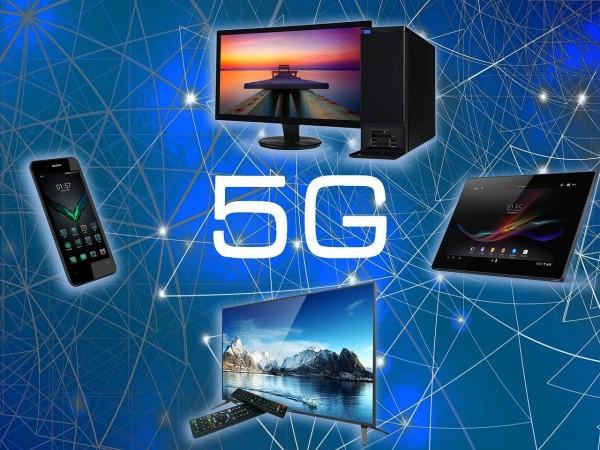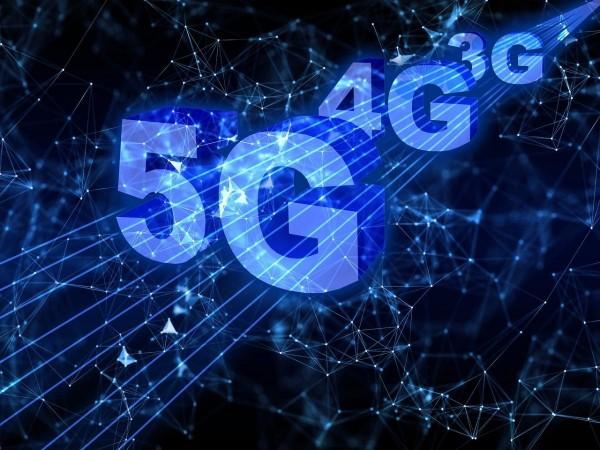The Covid-19 outbreak has taken the world by storm and brought global economies to a standstill. No one might have even envisioned a world of decentralised workings being the new norm, wherein bandwidth and capacity of home broadband and wireless networks are challenged to perform at its best.
In an exclusive interview with International Business Times, India, Sachin Kalantri, Sr Director, Product Marketing at Qualcomm India, highlighted statistical findings by the Department of Telecommunication that stated, 308 petabytes (PB) of data per day is consumed, which is huge actually. The data consumption figures would have increased in the month of May significantly as well.

There is a constraint on the capacity of the networks today to handle huge data loads from home base to meet educational, entertainment, work, play, and other miscellaneous needs. Before the Covid-19 attack, the entire workforce used to work from a single location, requiring concentrated bandwidth requirements, firewall planning, and better connectivity. Now working from home, the broadband requirements have gone up significantly.
The Department of Telecommunication (DoT), Government of India has pushed the 5G spectrum auctions, which was supposed to happen in June 2020 to likely happen in October-December this year owing to the coronavirus impact on all business sectors. A news report revealed GoI plans to sell 8303.05 MHz of 4G and 5G spectrum airwaves at its base price, to raise approximately Rs 5.23 lakh crore. Also, the 5G rollout for the Indian market will likely happen in 2021-22.
While Covid-19 has certainly delayed some of the 5G launch plans such as handset launches or the network launch, it has brought to notice the demand for 5G data connectivity and the need for mobile networks to handle huge content loads. Mobile connectivity is very important for work and also for connecting people in times of social distancing today.
Why do we need to upgrade to 5G?
Since many people use wireless as the primary connectivity, they may not be able to afford two connections at this point in time such as - the mobile broadband and the home broadband. In the current times, the need for data has increased but the capacity hasn't.
The Cellular Operators Association of India (COAI) came up with a statistical finding that stated a 30% increase in OTT demand and a total increase in data demand by 20%. These are indicative of the fact that data demand is increasing, with people working in a decentralized manner. However, broadband speeds have plummeted significantly. A report published by SpeedTest revealed, "fixed broadband speeds have decreased by 6 to 8% and mobile broadband speeds have seen a drop by 16 to 18%. With the need increasing and the capacity decreasing, it will impact user experience and in the long run, it is not a healthy situation to thrive."

Expressing the need for 5G, Kalantri said, "The times of uncertainty demand of networks to be high performance efficient by augmenting the capacity. The best way to augment capacity is to go to the next layer of technology i.e. 5G. If you use 5G technology, for example, it will increase your throughput and spectrum efficiency."
"There are multiple ways by which you can carve either a new spectrum and create additional capacity or overlay a new technology on top of it which is spectrally efficient. 5G is three times more spectrally efficient with respect to 4G. Also in 5G, you can have much wider bands, that increase your capacity and ability to carry additional network load. This helps improve the overall user experience."
A recent report finding brought to light the need for 5G, with operators and other agencies urging OTT players to downgrade the video delivery format from High-definition (HD) to Standard Definition (SD) as lately to manage the load on networks and essential services. This is a clear indicator that the need for data is much higher than what we are consuming today, and the only way to serve this purpose is by augmenting network capacity. This is where 5G comes into play.
How different would it have been if 5G was auctioned and deployed, before Covid-19 caught us unaware?
5G really helps in better delivery of multimedia and video content. Today, learning in virtual classrooms is most often a monologue by the teacher and students listening to it for hours, taking breaks in between, and perhaps losing out on interactive engagement with the teacher and other students in the class because of poor video and multimedia experience.
Only if 5G was enabled, a teacher would have been able to superimpose multimedia virtually to explain concepts better to students, and learning could be much more fun.
Also considering social distancing practices and regulations passed by the government has made it difficult for in-person consultation with doctors, online video consultation and diagnosis of clinical conditions of a patient could have been made possible using IoT on a 5G network, devices could be shared for monitoring pulse and capturing readings in real-time with the healthcare professional, thus serving the healthcare community at large.

Drivers and challenges to 5G adoption in India
In the context of 5G drivers, Kalantri opines, "While there is a demand and a need to accommodate more and more types of services and data when you go to the next generation of technology you benefit the industry. The growth of telecom and allied industries was seen when we moved from 3G to 4G - a lot of new business models came up, mobile e-commerce on 4G, gaming as a service on mobile phones, OTT was a big revelation and a lot of people moved from linear TV to content that can be consumed on-the-go using wireless technologies. Also when we move from 4G to 5G a lot of newer use cases and core services will come into play that will drive the growth of industry and jobs in India."
In terms of challenges, Kalantri said, "We do not have a spectrum which is already auctioned, and we are all waiting for the auctions to happen. Within the spectrum also, the power of 5G comes into play when you are deploying mm (millimeter) waves with 400 - 800 MHz kind of bandwidth to give huge capacity and boost in speed to users."
The industry faced a challenge in terms of devices a year ago, but now the challenge no longer exists with newer affordable devices being brought into the Indian market, even before 5G is launched by operators. The roadmap is to make more affordable 5G devices available in the second half of 2020-21.
China is investing heavily in 5G and developing a large ecosystem of devices. Report findings indicate that roughly 19% of subscriber activations in China were on 5G in Q4 2019 and in Q1 2020, but the number rose significantly to 30%. This means that there is an ecosystem under development in China. From the handset development point of view in China, Qualcomm believes that less than Rs 15000 handsets will be available next year. Plus other types of devices to help home broadband are existing today, so there is no dearth of devices.
"Fixed Wireless Access (FWA) technology will make possible home broadband, without having to lay the cable to every home. With spectrums such as millimeter waves, you can use wireless to deliver fiber-like speed to every home using multiple newer technologies. This will solve bigger issues in countries like India where there are problems regarding laying of the cable in residential areas because the homes are very close, so on and so forth," Kalantri added.
As the industry is transforming globally, so is effective decision making becoming central to smooth organizational workings. While AI is empowering decision-making engines, and 4G technology is bringing the act to handheld devices, 5G is soon set to revolutionize the way decision making is done. Not limiting the process of decision-making to devices and data centers, the new evolving 5G model looks at decentralized decision making or an edge-based decision making which will happen in a distributed manner, with AI-engines closer to the cloud than the data center.
Kalantri believes, "Edge-based decision making will help in a number of ways such as improving sellability of the solution, and quicker turnaround times. For many mission-critical applications, you cannot depend upon the round trip of going to the cloud, to the servers, getting the data back, etc. 5G deployment will basically address the over-the-air latency issue (latency of communication between your end-device and the network node)."
Industries where 5G adoption will boost growth
Besides entertainment, there are other major areas where 5G adoption can be of great help.
- 5G private networks will allow the industry to do automation without being connected to wired networks. Running networks on wired is a clumsy idea because many times equipment is added later, which requires to rip apart the walls, ceiling, or floors. However wireless can save you of the external damages. For example, port automation, automation of the mining industry to understand what's happening inside mines without sending people, etc.
- Healthcare will be the next big industry that is set to revolutionize with 5G adoption, considering now visiting a doctor is challenging in times of a pandemic. If only 5G connectivity was made possible now for the doctors, they can not only examine the patient through visual video interaction but also monitor a lot of vital statistics when the patient is at home.
- Also, IoT will find a boost, with a number of devices being connected, using a combination of 4G and 5G in India will enable IoT on a large scale. For example, in the case of metering applications, IoT can be enabled easily. You do not have to send personnel to read meters every month, the readings can be gathered accurately, collectively form the central office itself, avoiding tampering with readings. Also tapping into networks can also be easily detected in metering applications with the use of IoT.
- Agriculture is another industry wherein 5G can be used. A number of countries are looking at the deployment of multiple sensors in different parts of the field to manage the moisture in the soil in such a way that it will always be optimal because the quality of the crop depends on how the soil is maintained. Also depending on places where water is needed, only those parts are watered often, else the moisture in soil otherwise is always optimally maintained.

How is 5G set to revolutionize the entertainment industry in the near future?
In the Indian context, entertainment is primarily mobile gaming, on-demand videos from YouTube, Netflix, Hotstar, Amazon Prime, and the likes, etc. These both give different user experiences enabled by the network. For example, in multiplayer gaming, the communication channel and pipeline needs to be robust and quick. If the communication on phone does not reach the server, and the server is not able to replicate it to other players, there is a communication delay. 5G technology helps avoid communication delays.
If you are playing a game that requires heavy computing for example, then it cannot be run on a traditional end device. You will access servers on the cloud and the things you see on the phone are renderings happening on the cloud. This rendering will only be meaningful to you if the speed of communication is good, while the latency of communication is minimum. Low latency of communication is beautifully enabled for 5G, so for gaming, it's the best.
As regards entertainment for OTT players, it is about how they take the delivery experience to a higher-level next. There used to be 360-pixels content in 3G times of the past, now we have 720 pixels HD content delivery using 4G. Taking this content delivery experience to the next level is what OTT players are looking for, which requires converting HD content to full-HD content, and then to ultra-HD (UHD) 4K content which is not possible with today's 4G deployment across India. We need 5G deployment because the capacity requirement for ultra-HD (UHD) 4K content is huge.
Today some phones are capable of providing 8K content, but you need to have a network that is capable of delivering such high-definition content and the capacity to run it. 5G will be able to deliver 8K content as well, but without looking too distant into the future even if we can deliver 4K or ultra-HD content then it's a good start. Also, researches are underway on how to create extended reality and virtual reality content to deliver a realistic experience.
Looking into the not-so-distant future for 5G in India
Talking about Qualcomm's plans for 5G deployment, penetration, and expansion in India, Kalantri said, "We have a thriving 5G ecosystem in the country, in terms of network, devices, and applications. From this standpoint, we will be working very closely with operators to make sure they bring the right features and help deploy them efficiently. Also with OEMs, the devices will be brought into the market considering Indian consumer demand. So the network and devices will be working in tandem to provide the best experience. Secondly, we will also work with a local ecosystem of developers, different OEMs manufacturing products for varied 5G use cases, and enable them to create experiences with the products beyond mobile broadband delivery or just gaming. We intend to grow the ecosystem beyond all these use cases we talked about. For Qualcomm India, it's all about bringing new experiences and we are focused on integrating connectivity along with other cameras, gaming experiences, and also in terms of battery life - all these are to be optimized."
He further added, "5G cannot be looked at in isolation, suppose to say we are enabling healthcare experience, then how does the camera, virtual reality engine and your connectivity work together to elevate user experiences. We at Qualcomm have all the technologies that consumers really need and they long for, we are uniquely positioned to provide those experiences and enable the best because that's what the consumers truly deserve."

















